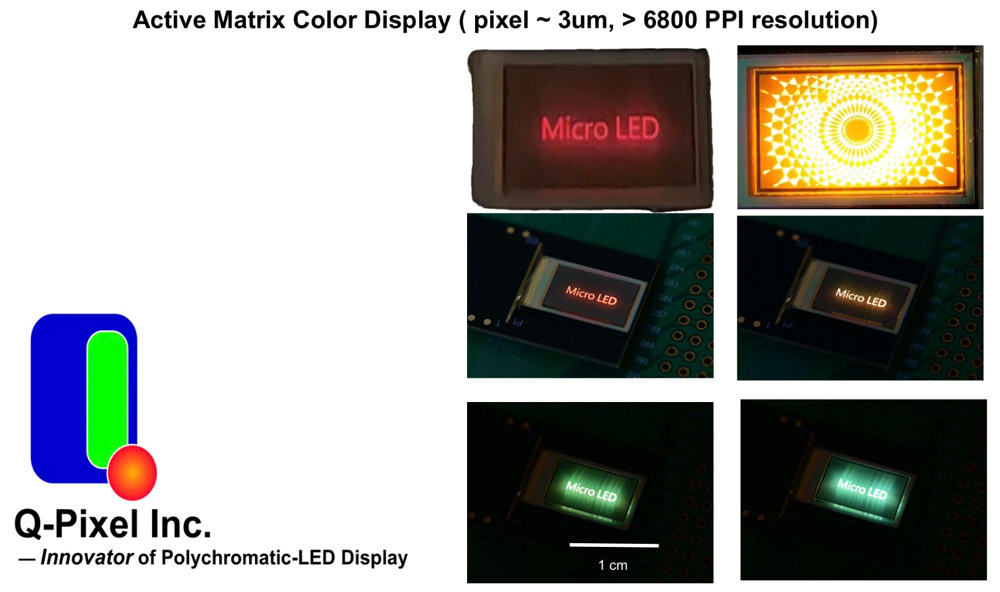News: LEDs
15 April 2024
Q-Pixel debuts highest-resolution active-matrix color display
Micro-LED display startup Q-Pixel Inc of Los Angeles, CA, USA has achieved what it claims is the highest-resolution active-matrix color display: 3K x 1.5K resolution in a screen of ~1.1cm x 0.6cm.
The display has 6800 pixels per inch (PPI), far surpassing existing state-of-the-art displays such as the Apple Vision Pro (~3380PPI). Q-Pixel has fabricated its display entirely using micro-LED pixels.

Picture: The world's highest-resolution active-matrix color display.
Unlike most advanced VR displays, which use micro-organic LEDs (micro-OLEDs), Q-Pixel’s displays consist entirely of III-V compound semiconductor micro-LED pixels. Synthesized from inorganic materials, III-V micro-LEDs offer advantages over OLEDs including faster response time, higher brightness, longer lifetime, and superior energy efficiency. From a physics perspective, inorganic III-V micro-LEDs have long been considered the ideal display technology but have lacked a clear path to commercial viability.
The main challenges to commercializing micro-LED displays arise from the traditional approach of assembling full-color pixels using individual monochromatic red, green and blue (RGB) LEDs. For high-resolution displays requiring small (<50μm) pixels, the assembly, testing, and repair of millions of RGB micro-LED subpixels is a complicated, labor-intensive and expensive process. Moreover, the physical space required for three RGB subpixels restricts the display's pixel density, posing an obstacle to realizing high-resolution displays. Q-Pixel’s overcomes both hurdles by replacing three RGB subpixels with individual, fully color-tunable pixels.
According to chief technology officer Dr Michelle Chen, this enabling technology is based on a disruptive tunable polychromatic LED (TP-LED) pixel: a single pixel capable of emitting light across the full color spectrum, without any use of subpixels, quantum dots, color filters, polarizers, or mechanical stacking. In addition to possessing all the benefits inherent to III-V LED technology, Q-Pixel’s single TP-LED is said to greatly simplify display assembly, reduce manufacturing costs, and enable record pixel densities.
Previously, in May 2023, Q-Pixel unveiled its record 5000PPI full-color micro-LED display, and in November it surpassed its record with the simultaneous announcement of a passive 10,000PPI micro-LED display made from the world’s smallest full-color pixels (1μm diameter), all based on its TP-LED technology.
Now, by delivering the highest-resolution (6800PPI) active-matrix color display, Q-Pixel has accomplished two milestones. First, it has proved that it is possible to produce ultra-high-resolution, active displays based on micro-LED technology. Secondly, it has shown that its TP-LED pixel technology surpasses more mature display technologies such as OLEDs to attain record pixel densities. With these latest achievements, Q-Pixel is embarking on the commercialization of its displays.
Q-Pixel’s technology and prototype is being demonstrated at the Society for Information Display’s annual symposium and tradeshow SID Display Week 2024 (14-16 May).
Q-Pixel joins Silicon Catalyst to accelerate full-color micro-LED display development









